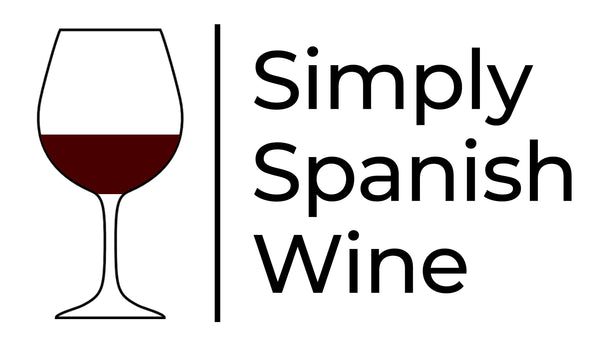[title]
[message]D'Mateo Quintas
D'Mateo Quintas
Clean, fresh, mineral blend from a favourite corner of Galicia
DO Ribeiro
D'Mateo Quintas is straw yellow in colour, with a very clean, steely and mineral nose with aromas of fresh young apple and crisp pear. More herbaceous notes on the palate, coupled with green apple, citrus and lime. Deliciously juicy feeling in the mouth. A very good alternative for all those Sauvignon Blanc fans out there.
Share
In stock
Couldn't load pickup availability





Collapsible content
Technical details
- Producer: Atlantic Galician Wineries
- Region: DO Ribeiro
- Vintage: 2020
- ABV: 12%
- Grapes: Treixadura, Godello, Torrontés
Food pairings
This wine will go well with:
- White Fish
- Octopus
- Mussels
- Clams
- Shellfish
Who makes D'Mateo Quintas

Half Italian, half Galician, Benedetto Carcieri has spent a lot of his working life travelling Spain and the world selling wines from Galicia, specifically from Denominación de Origen Ribeiro. Like many of his colleagues in the wine trade, all that energy and enthusiasm spent selling wine led him one day to the conclusion that the next logical step was to make his own wine.
Starting with just a few hectares of his own, Benedetto and the Atlantic Galician Wineries project has slowly expanded and now encompasses three of Galicia’s most celebrated appellations: the well-known coastal region of Rías Baixas, home of the Albariño grape, the dramatic terraced landscapes of Ribeira Sacra along the Sil and Miño rivers, and Ribeiro, famous for its centuries-old winemaking traditions and wonderful native white grapes like Treixadura, Torrontés or Godello.
The grapes
D’Mateo Quintas is a blend of three grapes – Godello, Torrontés and Treixadura.
Treixadura is the main white grape in the Ribeiro DO in Galicia. It’s a late-ripening variety, which means you’ll often find it on lower plots, or southerly facing plots to make the most of the warmth. Treixadura is a grape that offers quite refined aromas in the glass like stone and citrus fruits, and notes of white flowers.
Torrontés is a very old Galician variety, which used to be pretty widely planted across the Iberian Peninsula. It’s the second most widely planted white variety in Ribeiro. Like Treixadura, Torrontés produces aromatic wines, with fruit and floral notes.
Finally there’s Godello which brings body and slightly higher levels of alcohol to the wine. It also adds its own fruit flavours – a mixture of citrus and green apple together with sweeter fruits like peach. Godello brings structure to this wine, making it more complex than normal whites.
Where D'Mateo Quintas is made

Ribeiro, or "riverbank" in the Galician language, is the oldest of the five Denominaciones de Origen in Galicia. The first vines were planted at the time of the Romans and wine production really expanded with the settlement of the Benedictine religious order in the region in the 11th, 12th and 13th centuries. Then, as now, vineyards were grouped along the three valleys formed by the Miño, Avia and Arnoia rivers and healthy exports coupled with the wineries’ position on the pilgrims’ route to Santiago de Compostela ensured the fame of Ribeiro wines grew.
Overshadowed slightly by its more famous neighbour Rías Baixas, nevertheless, Ribeiro is well-known nowadays as a source of wonderful, blended white wines made from native local grapes like Treixadura, Torrontés, Godello or Loureira, and a growing collection of artisanal, small production red wines made with native grapes. There are just under 4,000 hectares of vines planted in the region, but over 5,000 registered growers so you can see that, as elsewhere in Galicia, vineyard plots are quite small. In terms of production, Ribeiro has about 115 registered wineries – known as adegas in the Galician language – who will grow some of their own grapes but also buy in grapes from the growers around them.
How D'Mateo Quintas is made
Treixadura, Godello, and Torrontés grapes are carefully selected and harvested by hand in the sloping, terraced vineyards in the Avia river valley north of Ourense in Galicia. Each variety is fermented separately in stainless steel tanks with careful control of the temperature. Once fermented the wine then sits in the tanks for the winter months where it gradually settles and clarifies. The varieties are then blended together before bottling.
As above m
Have to admit I am fairly new to trying different wines and thanks to Simply Spanish Wine I've been able to explore some of the great wine from this country most of which isn't available in the supermarket or restaurants. I ordered a case and sampled about half of the white wines they have on the website. This one was for me the best. Galicia and white wine just seems to work and I found this one "D'Mateo" one of the best white wines I have ever had. If you like your white wine extra cold, easy to drink, fresh, but still with a good amount of flavour this one is for you. I can see this one being a bit of a mainstay in my fridge, great wine!





